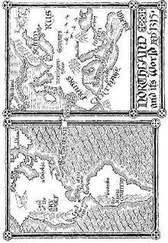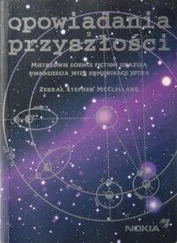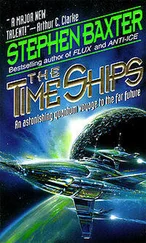Every element we see onscreen is there primarily to serve a narrative purpose, or to provide a striking image—and Avatar has plenty of narrative drive and rich imagery. Conversely, if the movie didn’t work in terms of narrative and imagery, all the good science in the world wouldn’t save it. So, as we explore the movie’s universe, we will always allow the creators “creative licence.” They created a world that feels alien, yet with enough points of familiarity that the movie audience is not constantly floundering in strangeness. Thus a Na’vi’s face has faintly catlike or leonine features: elements of the familiar used to give a sense of strangeness.
Incidentally, no doubt you’ll find a few places where you’ll entirely disagree with my interpretations and conclusions. That, too, is part of good science.
If you’re reading this book, I’ve assumed you’re familiar with the movie itself, and that you’re interested in the science, but I haven’t assumed any prior knowledge of the scientific topics involved. If you’re interested in following up further there is a list of further sources at the back of the book, including sources which will give you much more detail on elements of the movie itself; the emphasis here is on the science context. We’ll follow the logic of the movie storyline, but you should be able to dip into the book at any point you’re particularly interested in.
Avatar , among other things, is a story of a journey. Jake Sully travels from Earth to the stars. On Pandora, in his quest to save the Na’vi, he discovers his full humanity. And finally he ventures beyond humanity altogether. Our journey will track Jake’s. And ours will begin where Jake’s does: on Earth, in the mid-twenty-second century…
PART ONE

EARTH
“See, the world we come from: there’s no green there. They’ve killed their mother…”
—Jake Sully
In the movie Avatar we see very little of Earth. There are just a few brief scenes of Jake Sully with the body of his twin brother Tommy. What we hear about it makes for a grim scenario, however. As Jake tells Eywa, the forest goddess of Pandora, there’s no green left.
There’s a little more detail in deleted scenes in a draft screenplay by James Cameron (dated 2007 and available online): “Jake stares upward at the levels of the city. Maglev trains whoosh overhead on elevated tracks, against a sky of garish advertising… Most of the people wear filter masks to protect them from the toxic air… It is a marching torrent of anonymous, isolated souls.”
Jake’s Earth is evidently a world where the problems we face today have run to extremes, a world of overpopulation and over-development, of resource exhaustion and climate collapse, of pollution and extinctions. And it’s a world of warfare too. Miles Quaritch and Jake Sully, as serving soldiers, fought in such diverse arenas as Nicaragua and Venezuela—and we see plenty of military technology on Pandora in the course of the movie (see Chapter 20).
Unfortunately this is a future that is all too plausible. And it’s all because of farming.
Ten thousand years ago every human on the planet lived much as the Na’vi do, by hunting, fishing, and harvesting the fruits of the great wildwoods. And there were very few of them, only around three thousand people in the whole of Britain, say.
But with the development of farming much higher population numbers began to appear. The Earth’s resources were exploited much more intensively, including the planet’s mineral wealth. We began this process by digging deep mines to extract the best flint, working chalk seams with reindeer-bone axes.
Today there are around seven billion of us. We are reaching global limits on such essential resources as oil, coal, even fresh water. We use about a third of the planet’s land for our farms and cities, and consume perhaps forty per cent of its biological productivity—an astounding amount for a single species.
And we are increasingly aware of the impact we are having on the planet. There is an intense controversy about the extent to which the climate change we appear to be experiencing is affected by human action, and whether further impact can be averted if we change our ways. I think it’s fair to say that some environmental scientists believe that humans have been affecting the climate since the Industrial Revolution, if not even earlier; some are sceptical.
But whether it has been caused by human intervention or not, the evidence of climate change is all around us, and alarming news about the planetary life-support systems on which we all depend has become all too familiar.
How bad are things, and how bad might they get? It’s not an easy question. The way aspects of the environment interact with each other is poorly understood, and it’s an irony that we are only coming to understand the biosphere just as it is fraying at the seams.
However, in 2009 a team of environment and earth science specialists at Sweden’s Stockholm Environment Institute made a systematic map of the planet’s natural life support systems, to see how far we have pushed them already, and how much further we can go before our own survival is threatened. The exercise was a comparatively cool appraisal of where we are now and where we are going. The team came up with nine “dimensions,” each with an estimated safe boundary.
The bad news is that of the nine dimensions we have already exceeded three boundaries. The team’s measure of climate change is the level of carbon dioxide in the atmosphere. This crucial greenhouse gas occurs naturally in the air, but we are injecting more through burning fossil fuels. The “safe” boundary the scientists established is around twenty-five per cent higher than the “natural” pre-industrial level, but we passed that mark twenty years ago. Our impact on biodiversity is measured by extinction rates, which far exceed the background “natural” rate. We are destroying habitats, introducing alien species like weeds and rats, generating pollution and perhaps causing climate change—or we are just over-hunting. It’s thought that a tenth of all bird species, a fifth of all mammals, and a third of all amphibians are under threat. We know the ecosystems on which we depend, natural communities of plants and animals, rely on biodiversity, but we don’t know how much biodiversity they can afford to lose before they collapse, as happened after the great mass extinctions of the past such as the asteroid strike that killed off the dinosaurs. The nitrogen cycle is a relatively newly identified problem area. Nitrogen is essential for all living things, but only a small proportion of the planet’s inventory (most of the atmosphere is nitrogen) is of a usable form. We are “fixing” far too much of the useful stuff out of the air (by a factor of four) through the industrial manufacture of fertilisers, inefficient farming, and other processes.
The middling–bad news is that we seem to be approaching the boundaries in three other areas. We are using up far too much of the planet’s available fresh water supply—about a quarter of the world’s rivers no longer reach the ocean for at least part of the year. We are devoting too much land to human uses, such as crop-growing and urban development, and as a result we are losing the “ecosystem services” performed by forests, grasslands and wetlands, such as replenishing the air and stabilising the soil. Rising acidity in the ocean is another problem we’ve only recently identified; acidity eventually kills off such species as corals, and a less fertile ocean is less able to absorb carbon dioxide from the air.
Читать дальше











